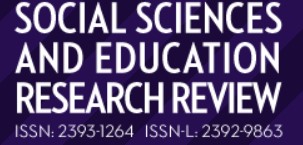The Impact of Problem-Based Learning Intervention and Students’ Pre-existing Motivation Level on Solving HOTS Mathematics Problem
The Impact of Problem-Based Learning Intervention and Students’ Pre-existing Motivation Level on Solving HOTS Mathematics Problem
Author(s): Edy Widayat, Ardianik Ardianik, Nuril HudaSubject(s): School education, Higher Education , Educational Psychology, Cognitive Psychology
Published by: Editura Sitech
Keywords: HOTS; Mathematics; Problem-based Learning; PBL; Problem Solving; Motivation;
Summary/Abstract: Most Indonesian students encounter difficulties when solving high-order thinking skills (HOTS) type of mathematics problems which require students to analyze and synthesize prior knowledge and relate it to new situations. This study aims to evaluate the effectiveness of problem-based learning (PBL) in solving HOTS mathematics problems among high school students. We also examined whether students’ level of motivation influence the ability of problem-solving skill as well as any interaction between learning models and study motivation on HOTS math type. A class intervention was conducted in one private Madrasa (Islamic High School) Mojokerto, Indonesia. A total of 59 students were divided into the intervention (PBL, n = 29) and control (conventional learning, n = 30) groups. Both groups had a similar topic on the linear system with three variables. The lessons were delivered by the same teacher twice a week, with a duration of 90 minutes per session within three weeks for each group. A two-way analysis of variance was performed to evaluate the data with the independent variables consisting of two models (PBL and non-PBL) and three levels of motivation (low, medium, and high). The dependent variable is the HOTS mathematics score. The ANOVA results showed that students in the PBL classroom (Mean = 82.78) obtained significantly higher math scores (p<0.001), compared to students in the non-PBL classroom (Mean=78.18). There was also a significant effect on motivation level (F (2, 53) = 16.30, p<0.001). Moreover, the significant interaction effect between models and motivation level F (2, 53) = 3.45, p = 0.04) indicated that students with high levels of motivation performed better in the PBL classroom while those with low levels of motivation in the same class did not. These findings suggest the urgency of implementing a mathematics education PBL-based model in secondary schools because of their benefits in boosting problem-solving skills for HOTS problems.
Journal: Social Sciences and Education Research Review
- Issue Year: 9/2022
- Issue No: 2
- Page Range: 80-87
- Page Count: 8
- Language: English

